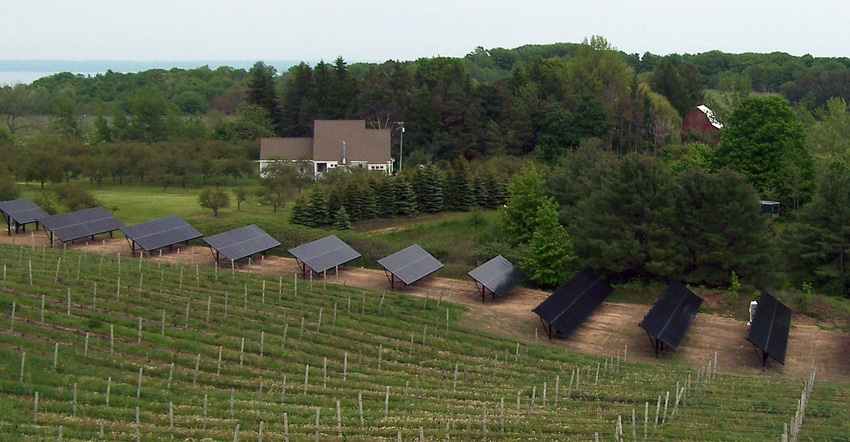
The popularity of solar leases has increased significantly in the last year. Companies are advertising in farm magazines in an attempt to coerce landowners to sign up their land for solar. Opportunities exist to make major income from solar leases as companies advertise lease rates of $800 to $1,200 per acre annually. However, like all potential rewards, risks also come.
Perhaps the biggest issue with solar leases is what happens at the end of the lease. Most, if not all, solar leases will state that the company will remove the facilities and restore the land at the end of the lease. But what if the solar company does not remove the solar panels or what if the company goes out of business?
It would likely be very expensive for the landowner to remove and dispose of the solar structure. The best solution to this problem is to have the solar company establish an escrow account or some other means to have funds available to the landowner if the solar facility is not removed. Solar companies may be reluctant to set up escrow accounts, as it ties up their money. However, without some means of protecting against failure to remove the solar panels the landowner is at significant risk.
The lease should address what is done with footers at the end of the lease when the facility is removed. The footers are usually concrete and several feet in the ground. Be sure to require that the footers be removed at least 2 feet, and preferably 3 feet, below the surface. This will prevent tillage equipment from being caught on the footers.
Another issue to address is the use of the land before and during the solar lease. Prior to building the solar structure, the solar company will need to do significant testing on the property. The lease should require the solar company to restore the property after testing and pay for any crop damage created. Crop damage can either be established by a formula or by an independent party. Also, the solar company should be required to mow or spray all weeds to prevent the growth and spread of noxious weeds on adjacent properties.
Look long term
Solar leases are long-term, usually at least 20 years initially, with an option to renew for another 20 to 25 years. A landowner who enters into a solar lease should expect to have solar panels on his or her farm for 40 to 50 years.
Installing a solar farm on farmland could cause the land to lose its Current Agricultural Use Value status, since the land is no longer used exclusively for agriculture. The lease should require the solar company to pay any increase in real estate taxes and any CAUV recoupment caused by the solar farm. CAUV recoupment can be considerable and should be addressed in the lease so that it is not a surprise to the landowner.
Finally, the lease must be in writing. Like any other transaction involving land, the only thing that matters is what is in writing. A term or condition that is agreed to verbally, but is not included in the written lease, is not part of the lease.
Verbal representations do not mean anything with real estate, including leases. Also, remember that the person with whom the landowner negotiates the lease is very likely not going to be part of the construction and implementation process. Therefore, it is important that everything is in witting and can be easily understood by any future parties that were not part of the negotiations.
Moore is an attorney with Wright & Moore Law Co. LPF. Email him at [email protected] or call 740-990-0750.
About the Author(s)
You May Also Like




